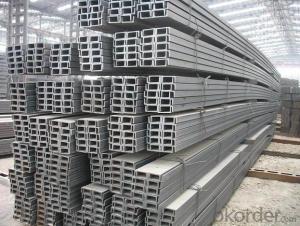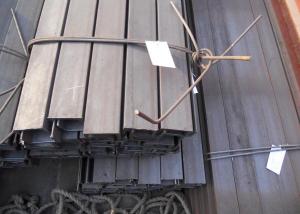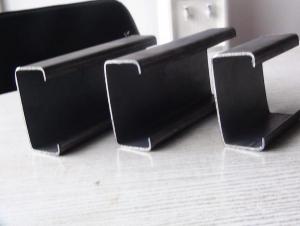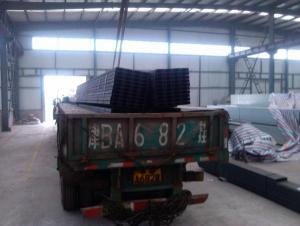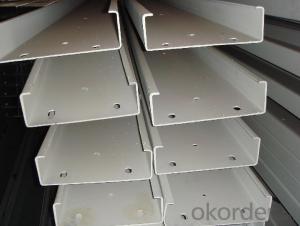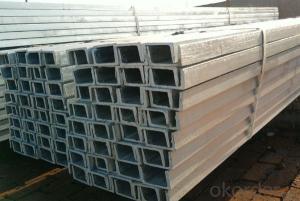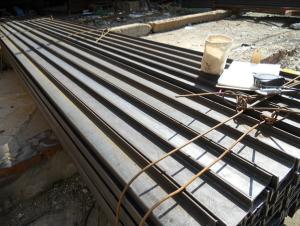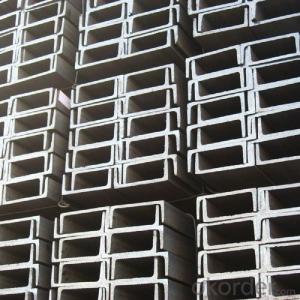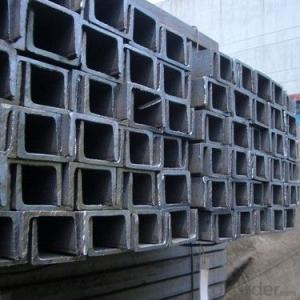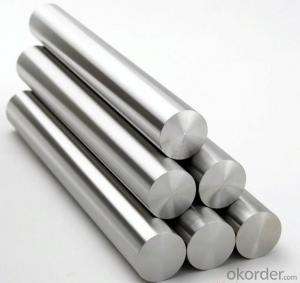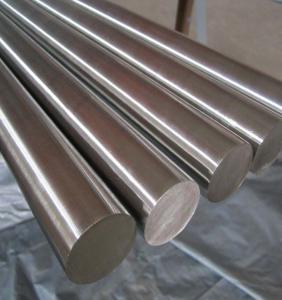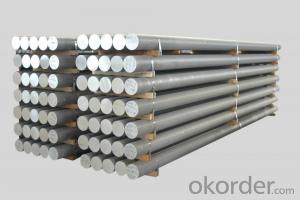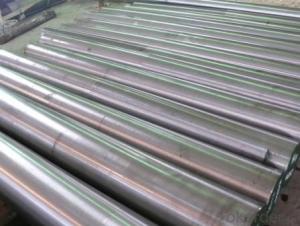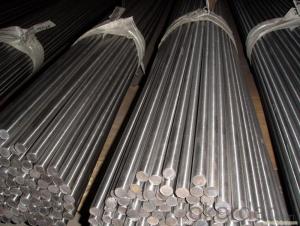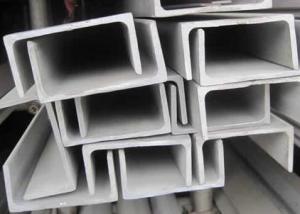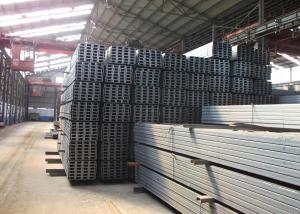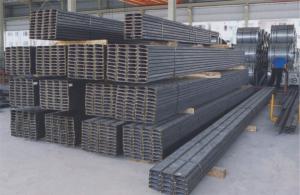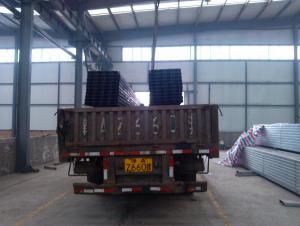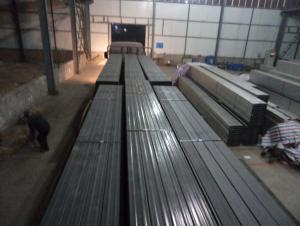Channel Bar AISI 316 HOR ROLLED Stainless Steel
- Loading Port:
- Tianjin
- Payment Terms:
- TT or LC
- Min Order Qty:
- 28 m.t.
- Supply Capability:
- 20000 m.t./month
OKorder Service Pledge
OKorder Financial Service
You Might Also Like
Product Description:
OKorder is offering Channel Bar AISI 316 HOR ROLLED Stainless Steel at great prices with worldwide shipping. Our supplier is a world-class manufacturer of steel, with our products utilized the world over. OKorder annually supplies products to European, North American and Asian markets. We provide quotations within 24 hours of receiving an inquiry and guarantee competitive prices.
Product Applications:
Channel Bar AISI 316 HOR ROLLED Stainless Steel are ideal for structural applications and are widely used in the construction of buildings and bridges, and the manufacturing, petrochemical, and transportation industries.
Product Advantages:
OKorder's Channel Bar AISI 316 HOR ROLLED Stainless Steel are durable, strong, and resist corrosion.
Main Product Features:
· Premium quality
· Prompt delivery & seaworthy packing (30 days after receiving deposit)
· Corrosion resistance
· Can be recycled and reused
· Mill test certification
· Professional Service
· Competitive pricing
Product Specifications:
1.stainless steel channel bar
2.Grade:200,300series
3.Size:50*25*2-200*100*10mm
4.Finish:black,pickling
5.ISO,SGS
1.Description stainless steel channel bar,stainless steel channel beam, stainless steel U bar | |||||
2.Grade AISI 201,202,301,304,304L,316,316L,321,410,420,430,2205 etc. 201 (1Cr17Mn6Ni5N) 202 (1Cr18Mn8Ni5) 301 (1Cr17Ni7) 304 (0Cr18Ni9) 304L (00Cr19Ni10) 310 (1Cr25Ni20) 316 (0Cr17Ni12Mo2) 316L (00Cr17Ni12Mo2) 321 (0Cr18Ni11Ti) 410 (1Cr13) 420 (2Cr13) 430(1Cr17) 2205 Duplex stainless steel | |||||
3.Size | |||||
Size | Weight/m | Size | Weight/m | ||
50×37×4.5mm | 5# | 5.44kg | 140×60×8mm | 14#A | 14.53kg |
63×40×4.8mm | 6.3# | 6.635kg | 160×63×6.5mm | 14#B | 16.73kg |
65×40×4.8mm | 6.5# | 6.70kg | 160×65×8.5mm | 16#A | 17.23kg |
80×43×5mm | 8# | 8.045kg | 180×68×7mm | 16#B | 19.755kg |
100×48×5.3mm | 10# | 10.007kg | 180×68×7mm | 18#A | 20.17kg |
120×53×5.5mm | 12# | 12.06kg | 180×70×9mm | 18#B | 23kg |
126×53×5.5mm | 12.6# | 12.37kg | 200×75×9mm | 20# | 25.777kg |
4.Surface hot rolled pickled ,polished ,sand blasting,hairline | |||||
5.Packing
i. Common Standard Export-sea Packing : Each bundle is fixed at lest three times strips , wrapped with durable PVC material . ii. Special Packing : Covered with film and packed in wooden box . | |||||
6.Trade terms (1) Minimum order quantity: 1 T (2) Price term: FOB Shanghai,CIF+discharging port (3) Payment term: 30% advanced T/T payment (4) Delivery time: 15-30 days or depend on order quantity (5) Packing: Export-sea worthy packing with each bundle tied and protected or according to the customer’s request (6) The capability for a 20’’ container: 20-24 ton | |||||
FAQ:
Q1: Why buy Materials & Equipment from OKorder.com?
A1: All products offered byOKorder.com are carefully selected from China's most reliable manufacturing enterprises. Through its ISO certifications, OKorder.com adheres to the highest standards and a commitment to supply chain safety and customer satisfaction.
Q2: How do we guarantee the quality of our products?
A2: We have established an advanced quality management system which conducts strict quality tests at every step, from raw materials to the final product. At the same time, we provide extensive follow-up service assurances as required.
Q3: How soon can we receive the product after purchase?
A3: Within three days of placing an order, we will begin production. The specific shipping date is dependent upon international and government factors, but is typically 7 to 10 workdays.
Q4: What makes stainless steel stainless?
A4: Stainless steel must contain at least 10.5 % chromium. It is this element that reacts with the oxygen in the air to form a complex chrome-oxide surface layer that is invisible but strong enough to prevent further oxygen from "staining" (rusting) the surface. Higher levels of chromium and the addition of other alloying elements such as nickel and molybdenum enhance this surface layer and improve the corrosion resistance of the stainless material.
Q5: Can stainless steel rust?
A5: Stainless does not "rust" as you think of regular steel rusting with a red oxide on the surface that flakes off. If you see red rust it is probably due to some iron particles that have contaminated the surface of the stainless steel and it is these iron particles that are rusting. Look at the source of the rusting and see if you can remove it from the surface.
Images:
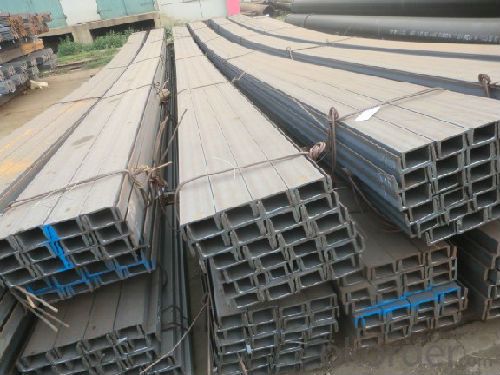
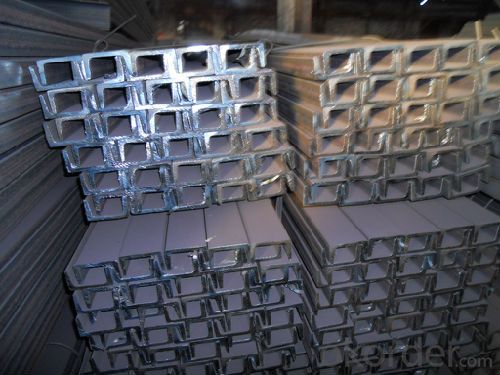
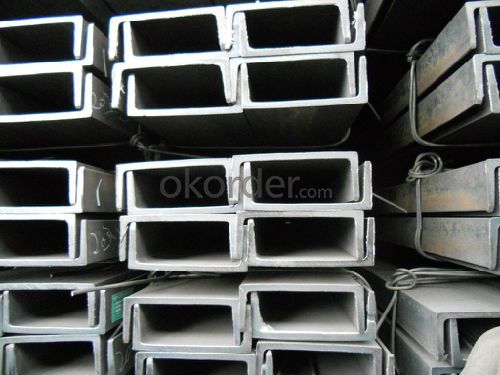
- Q: How do steel channels contribute to the overall safety of a structure?
- Steel channels contribute to the overall safety of a structure by providing structural support and stability. They are used to reinforce beams, columns, and frameworks, enhancing the load-bearing capacity of the structure. Additionally, steel channels can help distribute and redirect forces, such as those caused by wind or seismic activity, reducing the risk of structural failure. Their high strength and durability make them resistant to deformation and ensure long-term stability, further enhancing the safety of the entire structure.
- Q: What are the different fabrication techniques for steel channels?
- There are several different fabrication techniques for steel channels, including hot rolling, cold rolling, and extrusion. Hot rolling involves heating the steel to high temperatures and then passing it through a series of rollers to shape it into the desired channel profile. Cold rolling, on the other hand, is performed at room temperature and involves passing the steel through rollers to achieve the desired shape. Extrusion is a process where the steel is forced through a die to create the channel shape. Each technique has its own advantages and is chosen based on factors such as the required dimensions, tolerances, and surface finish of the steel channel.
- Q: What are the different design codes for steel channels?
- There are several design codes that are commonly used for steel channels, including the American Institute of Steel Construction (AISC) Specification for Structural Steel Buildings, Eurocode, British Standards, and Canadian Standards. These codes provide guidelines and requirements for the design and construction of steel channels to ensure structural integrity and safety.
- Q: Channel steel is mainly used in building structures
- They are divided into ordinary channel steel and light channel steel. The specification of hot-rolled ordinary channel steel is 5-40#, and the specifications of the hot rolled channel steel supplied by both sides of supply and demand agreement are 6.5-30#.
- Q: Can steel channels be used in coastal areas?
- Steel channels are indeed suitable for use in coastal areas due to their strength and durability. However, it is crucial to consider the potential impact of saltwater and airborne salt on these channels. The presence of saltwater and salt-laden air can expedite corrosion, especially if the steel channels lack adequate protection. To ensure long-term performance and prevent corrosion damage, it is essential to implement proper protective measures such as corrosion-resistant coatings or galvanization on the steel channels. Regular maintenance and inspections are also highly recommended to promptly address any signs of corrosion or damage. By taking these precautions, steel channels can be effectively utilized in coastal areas and withstand the challenges posed by the marine environment.
- Q: What are the different methods for anchoring steel channels to a foundation?
- Different methods exist for anchoring steel channels to a foundation, depending on the specific requirements and load capacity of the structure. Some commonly used methods are as follows: 1. Anchor Bolts: This method involves drilling holes into the foundation and inserting anchor bolts, which are then secured using nuts and washers. This creates a strong connection between the channel and the foundation. 2. Chemical Anchoring: When drilling into the foundation is not feasible or preferred, chemical anchoring can be employed. This method utilizes epoxy resin or adhesive to bond the steel channel to the foundation. The adhesive is applied to the base of the channel and pressed onto the foundation surface. After curing, a strong bond is formed between the channel and the foundation. 3. Welding: Another method for anchoring steel channels involves welding the base of the channel directly to the foundation surface. This method provides a permanent and robust connection; however, it necessitates skilled welders and may not be suitable for all applications. 4. Expansion Anchors: When a temporary or removable connection is required, expansion anchors are utilized. These anchors consist of a bolt or screw inserted into a pre-drilled hole in the foundation. As the bolt is tightened, it expands and wedges itself against the hole's sides, creating a secure connection. 5. Concrete Embedment: In certain cases, steel channels can be directly embedded into the concrete foundation. This method involves pouring concrete around the channel, completely surrounding and encasing the steel. Once the concrete hardens, a solid and permanent connection is established. To select the appropriate anchoring method for steel channels, factors such as load capacity, environmental conditions, and project requirements should be taken into consideration. Consulting a structural engineer or construction professional is advised to ensure the proper selection and installation of the anchoring method.
- Q: What are the different grades of steel used for channels?
- The different grades of steel used for channels include A36, A572, and A588.
- Q: What are the different types of support methods for steel channels?
- There are several different types of support methods for steel channels, depending on the specific application and structural requirements. Some common support methods include: 1. Beam and column supports: Steel channels can be supported by beams and columns, which provide vertical support and distribute the weight of the channel. This is a common method used in building construction, where steel channels are often used as structural members. 2. Hanging supports: Steel channels can be suspended from above using hanging supports such as rods, cables, or chains. This method is often used in applications where the channel needs to be elevated or hung from a ceiling or overhead structure. 3. Bracket supports: Steel channels can be supported by brackets, which are fixed to a wall or other surface. Brackets provide lateral support and stability to the channel, preventing it from bending or twisting under load. This method is commonly used in shelving systems or wall-mounted installations. 4. Channel supports: Steel channels can also be supported by other channels, creating a system of interconnected support. This method is often used in applications where multiple channels need to be joined together to form a larger structure or framework. 5. Channel cleats: Steel channels can be supported using channel cleats, which are metal brackets that are bolted or welded to the channel and then fixed to a supporting structure. This method provides a secure and rigid connection between the channel and the support. 6. Channel frames: Steel channels can be supported by framing systems, where multiple channels are connected together to form a frame or structure. This method is commonly used in applications such as conveyor systems or equipment supports. Overall, the choice of support method for steel channels depends on factors such as the specific application, load requirements, and desired level of stability and rigidity. Professional engineers and designers should carefully consider these factors to select the most appropriate support method for their specific project.
- Q: What are the different types of connections for steel channels in curtain wall systems?
- There are several types of connections used for steel channels in curtain wall systems, including bolted connections, welded connections, and adhesive connections. Bolted connections involve using bolts and nuts to secure the steel channels to the framing members. Welded connections involve melting the steel channels and the framing members together to create a strong bond. Adhesive connections involve using specialized adhesives to bond the steel channels to the framing members. Each type of connection has its own advantages and considerations depending on factors such as load requirements, ease of installation, and aesthetic preferences.
- Q: Are steel channels suitable for modular construction practices?
- Yes, steel channels are suitable for modular construction practices. Steel channels provide excellent strength and durability, making them ideal for use in modular construction. They are commonly used in the construction of modular buildings, as they offer a reliable and sturdy framework for the structure. Steel channels are also versatile and can be easily customized to meet specific design needs, allowing for flexibility in modular construction. They can be cut, welded, and shaped according to the required dimensions, making them highly adaptable for modular construction projects. Furthermore, steel channels are lightweight compared to other construction materials, which makes them easier to transport and assemble in modular construction practices. This characteristic also contributes to the overall efficiency of modular construction, as it reduces time and labor costs during installation. In addition to their strength, versatility, and lightweight nature, steel channels are also resistant to corrosion, fire, and pests, ensuring the longevity and safety of modular structures. These properties make steel channels a reliable and suitable choice for modular construction practices.
Send your message to us
Channel Bar AISI 316 HOR ROLLED Stainless Steel
- Loading Port:
- Tianjin
- Payment Terms:
- TT or LC
- Min Order Qty:
- 28 m.t.
- Supply Capability:
- 20000 m.t./month
OKorder Service Pledge
OKorder Financial Service
Similar products
Hot products
Hot Searches
Related keywords
